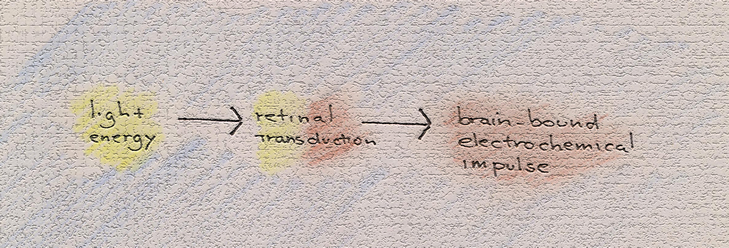Brain
So, where are we?
Light has entered the eye in the form of oscillating packets of energy called photons. The photons have imparted their energy to photoreceptors—rods and cones—in the retina where light energy has been transduced into chemical energy, which will subsequently be transformed into electrical energy--a language in which the retina can now communicate with the brain.

In essence, molecules of the chromophore 11-cis retinal, embedded within the opsins of the photoreceptors, have been photo-isomerized, or converted by light energy, into all-trans retinal. This is a conformational change in which the 11-cis retinal molecule is made to straighten out and push against the surrounding membrane.

This then stretches open G-protein coupled receptors within the folded membranes of the outer segments of the rods and cones, resulting in an inflow of extra-cellular Na+ and Ca++ that initiates a biochemical cascade and a subsequent train of brain-bound signals.

These signals are conveyed from the photoreceptors to the bipolar cells to the ganglion cells whose axons—numbering about 1 million—converge at the optic disc and exit the eye in a myelinated bundle now called the optic nerve.